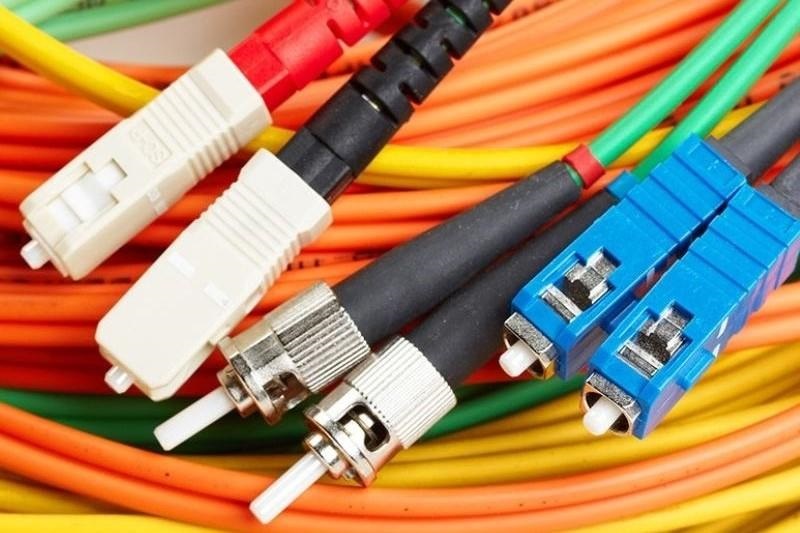What Is Fiber Optic Patch Cords?
Patch Cords, Also Called Cable Patches, Are Network Cables Pre-Socketed At The Factory And Are Used To Save Time And Increase The Efficiency Of Cables.
The patch cords are punched and tested in the factory; Therefore, they minimize human error. A fiber optic patch cord is a fiber optic cable whose two ends are covered with connectors and can be used to quickly and easily connect to equipment.
The fiber optic patch cord has a high refractive index core with a low refractive index coating.
Core transparency allows the transmission of optical signals over long distances. Light is reflected into the core by coating, thus reducing signal loss. Fiber optic patch cords with fiber optic connectors LC, SC, MTRJ, ST, etc., are sold in the market.
Connectors allow the fiber optic wire to connect to a switch or other device quickly.
Why are fiber optic patches so crucial to the network?
These patch cords are used in network equipment to connect switches and servers. If fiber optic patch cords malfunction, they affect network performance or lead to complete network outages.
What are the benefits of fiber optic patch cords?
Transmission speed: Fiber optic patch cords have a much higher transmission speed than copper cables.
Transmission distance: Fiber optic cable patches can connect far apart devices.
Low attenuation rate and high safety against noise: Fiber optic patch cords are protected against electromagnetic interference (EMI) and radio frequency interference (RFI). In addition, they have the lowest attenuation drop among cable connectors, making them more reliable than copper cables.
Lightweight and with thin strands: The diameter of the fiber optic patch cord strands is the size of human hair. Their data transfer capabilities are much higher than their copper counterparts. Ordinary copper cable is four times wider and transmits only part of the data. Fiber optic cable is lighter, more flexible, and takes up less space, So it is easier to manage.
Types of fiber optic patch cords

Fiber optic patch cords can be categorized in fiber optic cable mode, transmission mode, coating type, connector type, and polishing.
Fiber optic patch mode: Single Mode or Multimode
The Fiber optic patch mode shows how light rays travel inside the fiber. There are two modes of fiber optic cable: Single Mode and Multimode.
Single-fiber optic cables are commonly used for enterprise network applications and home networking with high-speed Internet connections. The main difference between single-state and multi-state cable patches is their core size. The core of a single-core cable is much smaller than a multi-core cable, making it very useful in situations where you need a remote transmission.
Number of fiber optic filaments: Simplex or Duplex
Depending on the number of fiber optics, fiber optic patch cords are available in either Simplex or Duplex. The Simplex fiber patch cord consists of a fiber optic string with a Simplex connector at each end. It can be used for connections inside the equipment rack or to connect multiple devices to a single component such as a hub or switch.
Its Duplex fiber optic patch cords consist of two strands with a Duplex interface. The duplex fiber optic patch cord includes two connectors for sending and receiving data simultaneously. These cables are commonly used to connect high-speed network equipment, including switches, servers, and storage systems.
Type of coating: PVC or LSZH
PVC and LSZH are the most common fiber patch coatings. PVC coated fiber cable patches are flexible at average installation temperatures. Compared to PVC patch cords, LSZH patch cords are stiffer and less flexible. These coatings contain a flame retardant compound that does not emit toxic fumes when burned. PVC fiber optic patch cords are commonly used for indoor applications. At the same time, LSZH cable is used in unventilated and exposed areas, such as subways and tunnels.
Connector type: LC, SC, MTRJ, ST etc.
Many types of connectors are used in fiber optics patch cords, such as LC, SC, ST, MTP, or MPO. Fiber patch cords with the same connection at both ends include LC to LC fiber patch cords, SC to SC fiber patch cords, and so on. At the same time, hybrid fiber patch cords have different connectors at each end, such as the LC to SC fiber wire patch. If the device port type is the same on both sides, you can choose the exact type fiber optic patch, or you have to select the hybrid type.
Polishing Type: PC, UPC, or APC
Fiber optic connectors are designed in different ways. Depending on the type of polish on these connectors, there are PC, UPC, and APC fiber optic patch cords. Today, PC polishing has been replaced by UPC. Whether you choose UPC or APC depends on your usage. Because APCs offer lower input losses than UPCs, APC patches are more useful for high-bandwidth and long-distance applications. UPC patches apply to systems such as digital TV and telephones.
Conclusion
In today’s networking world, fiber optic patches have helped the industry increase bandwidth and speed. Standard fiber optic patchwork parameters, such as fiber cable mode and connector types, are the most essential and crucial elements. Based on our description of the patchwork types, you may be wondering which factor is more critical in choosing a fiber optic patchwork.
With all this talk, getting help from an expert is always the best choice to avoid losses when it is difficult to decide, and you do not have enough expertise and knowledge in this field. To do this, you can get help from the experts of Podsan Network Communications Company, which has a variety of fiber optic patch cords for purchase and advice.

